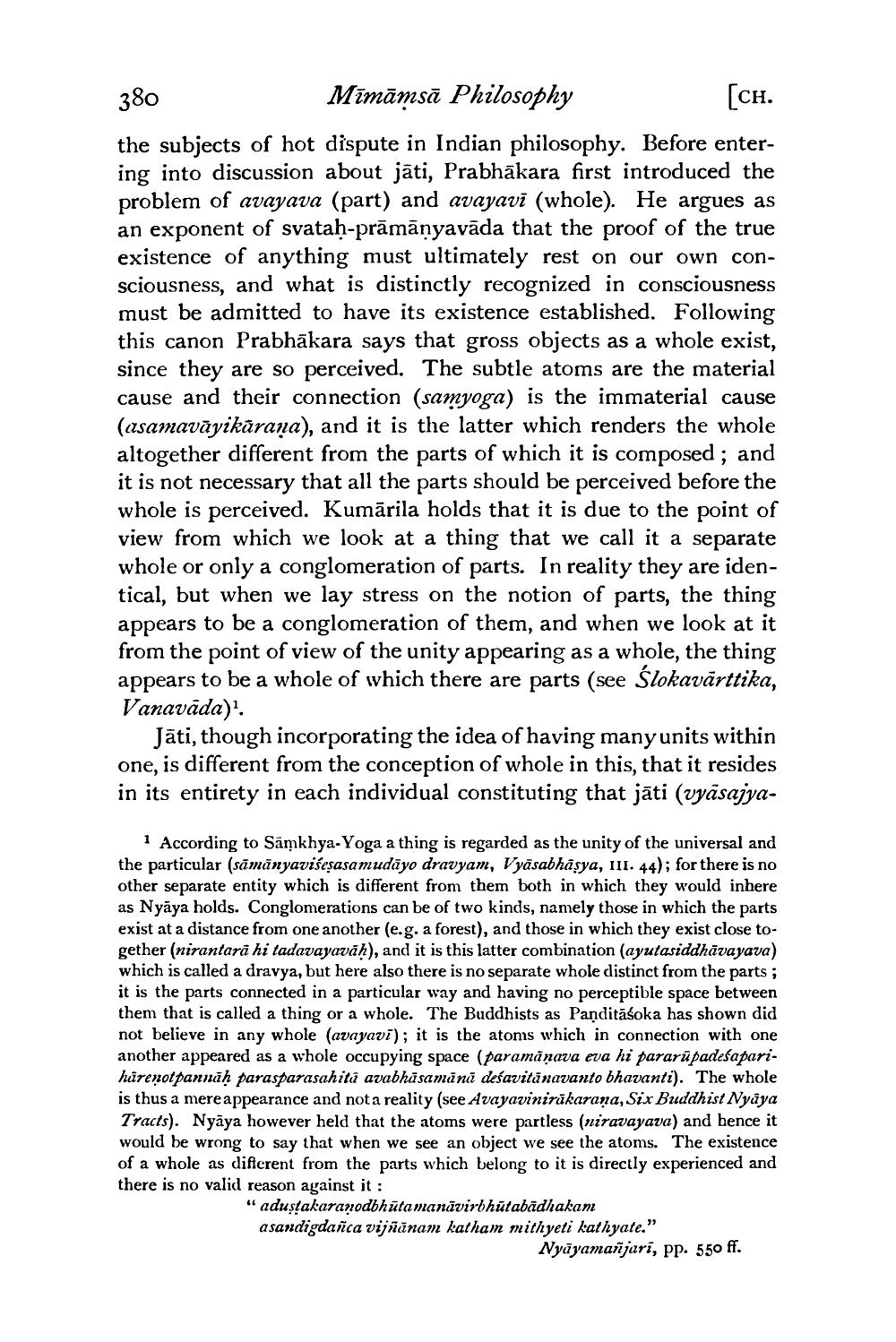________________
380
Mimāmsā Philosophy
[CH.
the subjects of hot dispute in Indian philosophy. Before entering into discussion about jāti, Prabhākara first introduced the problem of avayava (part) and avayavi (whole). He argues as an exponent of svataḥ-prāmānyavāda that the proof of the true existence of anything must ultimately rest on our own consciousness, and what is distinctly recognized in consciousness must be admitted to have its existence established. Following this canon Prabhākara says that gross objects as a whole exist, since they are so perceived. The subtle atoms are the material cause and their connection (samyoga) is the immaterial cause (asamavāyikārana), and it is the latter which renders the whole altogether different from the parts of which it is composed ; and it is not necessary that all the parts should be perceived before the whole is perceived. Kumārila holds that it is due to the point of view from which we look at a thing that we call it a separate whole or only a conglomeration of parts. In reality they are identical, but when we lay stress on the notion of parts, the thing appears to be a conglomeration of them, and when we look at it from the point of view of the unity appearing as a whole, the thing appears to be a whole of which there are parts (see Ślokavārttika, Vanavāda).
Jāti, though incorporating the idea of having many units within one, is different from the conception of whole in this, that it resides in its entirety in each individual constituting that jāti (vyāsajya
According to Sāņkhya-Yoga a thing is regarded as the unity of the universal and the particular (sāmānyaviseşasamudāyo dravyam, Vyasabhâsya, III. 44); for there is no other separate entity which is different from them both in which they would inhere as Nyāya holds. Conglomerations can be of two kinds, namely those in which the parts exist at a distance from one another (e.g. a forest), and those in which they exist close together (nirantara hi tadavayavāk), and it is this latter combination (ayutasiddhāvayava) which is called a dravya, but here also there is no separate whole distinct from the parts; it is the parts connected in a particular way and having no perceptible space between them that is called a thing or a whole. The Buddhists as Panditāśoka has shown did not believe in any whole (avayavi); it is the atoms which in connection with one another appeared as a whole occupying space (paramāņava eva hi pararūpadeśapariharenotpannāḥ parasparasahità avabhāsamānā deśavitānavanto bhavanti). The whole is thus a mere appearance and not a reality (see Avayavinirākarana, Six Buddhist Nyaya Tracts). Nyāya however held that the atoms were partless (niravayava) and hence it would be wrong to say that when we see an object we see the atoms. The existence of a whole as different from the parts which belong to it is directly experienced and there is no valid reason against it :
"aduştakaranodbhūtamanūvirbhūtabādhakam asandigdañca vijñānam katham mithyeti kathyate."
Nyāyamañjari, pp. 550 ff.




